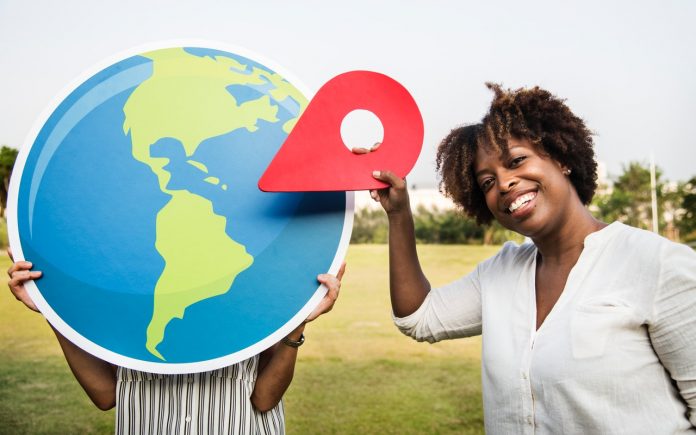From impossible meat to CBD in everything, there are some new and intriguing trends taking the restaurant industry by storm in 2019. Sustainability and conscious eating continue to loom large in the minds of consumers; but as far as the customer experience goes, geo-fencing is dominating the dining world.
Restaurant delivery is a growing facet of the dining industry driven by the increase in mobile ordering and the needs of the on-the-go customer. According to forecasts by Investment Bank UBS, restaurant delivery sales are expected to rise more than 20% annually and reach $365B in 2035, up from $35 billion in 2018. Critical to this growth is the increased adoption of geofencing marketing within the in-app experience. Here’s how geofencing is revolutionizing the future of the restaurant industry.
Geofencing and the contextual experience
Despite the increasing popularity of restaurant delivery, some food merchants have a hard time mitigating the impact of delivery on their bottom line. Delivering a $10 meal with a $3 delivery fee isn’t sustainable in the long-run. Between high gas prices, wages, other vehicle costs, and the expense of packaging delivery, many restaurants will be hard-pressed to absorb the high operational costs.
Carryout seems like the best possible alternative, where “last-mile delivery” is outsourced to the customer. The primary motivation for diners to prefer delivery and carryout is convenience: delivery is more often the first choice for customers who don’t want to arrive at a restaurant only to find that their order isn’t ready and waiting for them. This is where geofencing can streamline the takeaway experience to be fast and efficient for the customer, and more cost-effective for the restaurant. Geofencing tracking within the restaurant app can help the restaurant understand location data to trigger alerts to the back-of-house, telling the kitchen when to fire up the order or when the customer is stuck in traffic. For the customer, contextually-relevant messages can be sent to remind them to start traveling to the restaurant at the optimum time, depending on how far they are.
Companies like McDonald’s and Starbucks have begun testing in-app software that lets a customer order ahead and uses geofencing to predict when the customer will arrive. This ensures the customer receives a freshly-made order that’s ready when they arrive. As HBR describes,“on-site carry-out creates value because it outsources last-mile delivery to the consumer, who is often able to perform this task at a lower cost than the delivery company.”
How are brands using geofencing in their in-app experience?
The possibilities presented by geofencing are clearly powerful. Here’s how some QSRs have started experimenting with geofencing to improve the customer carryout experience.
McDonald’s tests order-ahead
In 2017, McDonald’s began to experiment with geofencing built into its app to allow customers to create an order anywhere and pay for it through the app upon arrival. The goal of the test was to reduce wait lines, cold food, and customer congestion at McDonald’s locations across California and Washington state. With the initial success, McDonald’s has since rolled out order-ahead to locations worldwide. The app doesn’t allow customers to order outside a certain geofence, ensuring the carryout order will be hot and ready by the time the customer arrives.
Burger King’s real-time geofencing campaign
Not one to sit out on a new technology, Burger King responded to McDonald’s use of geofencing with a campaign of their own. The Whopper Detour campaign of 2018 made use of in-app geofencing to lure customers away from a McDonald’s. When the customer’s mobile app was within 600 feet of a McDonald’s location, geofencing would trigger the delivery of a digital coupon offering the Burger King Whopper for just 1 cent. This campaign had the double benefit of increasing foot traffic to Burger King locations while also increasing app downloads, helping Burger King continuously reach customers after the campaign ended.
Grubhub and Dunkin’ Donuts improve delivery data
Geofencing isn’t just for optimizing carryout. Dunkin’ Donuts partnered with food delivery service Grubhub to leverage geofencing for better data and customer insight. Grubhub placed geofences around the 400 New York City Dunkin’ locations to measure traffic and delivery times. According to industry analysts, Dunkin’ Donuts plans to use geofencing analytics to “optimize efficiencies, as well as order accuracy and consistency.” Geofencing can provide the detail brands need to constantly tailor and improve the customer experience no matter how the customer chooses to dine in (or out).
Best practices for geofencing in the dining industry
QSR brands have only begun to scratch the surface of geofencing. Beyond providing better delivery analytics and clever marketing campaigns, location context can help restaurants understand customer loyalty, impact customer engagement, and help them save on operational and delivery costs.
This article is contributed by Radar.




